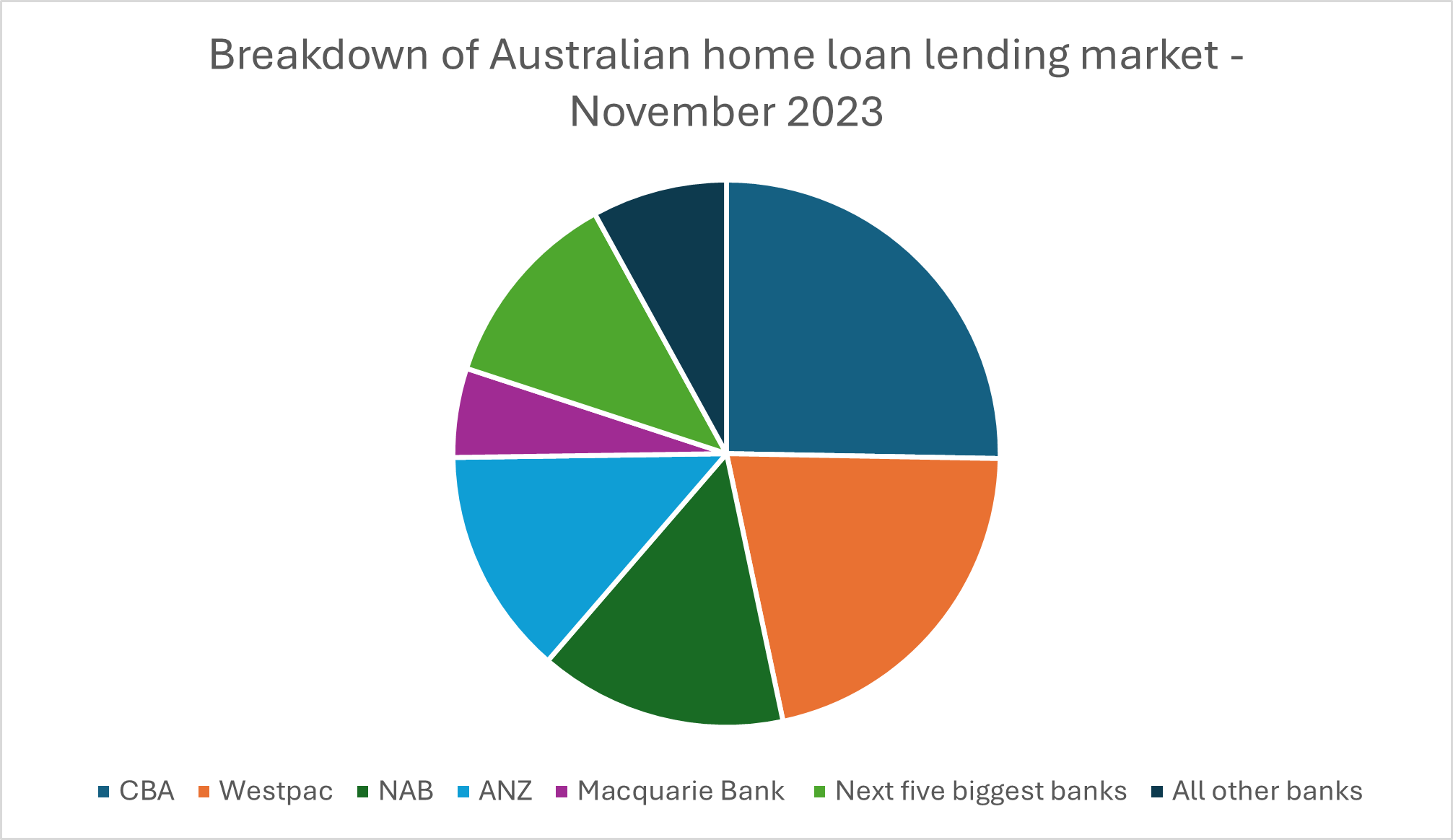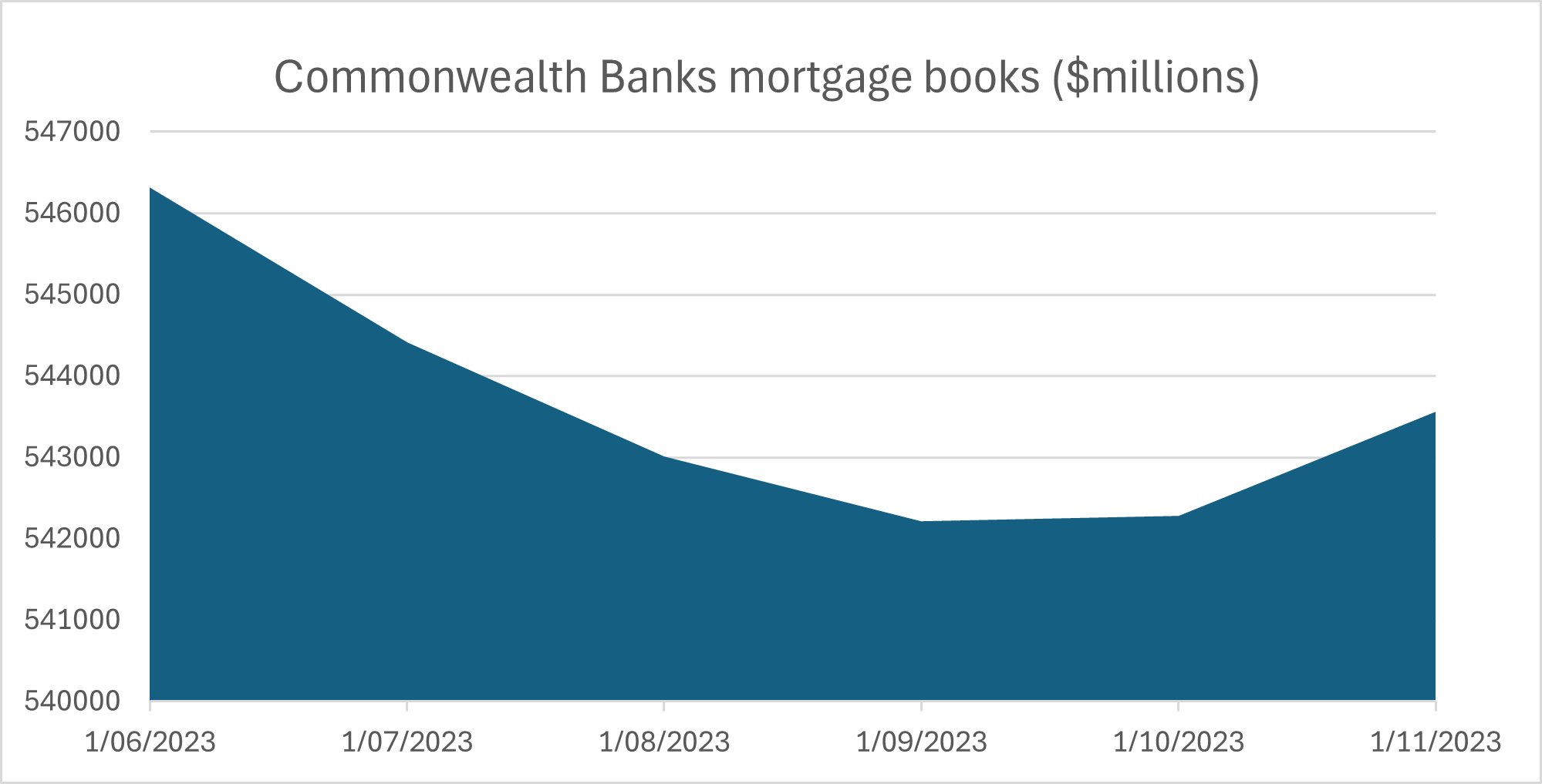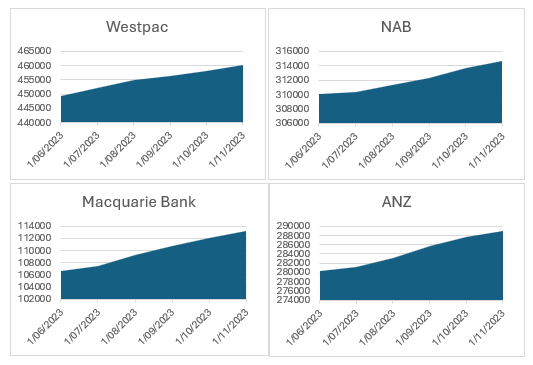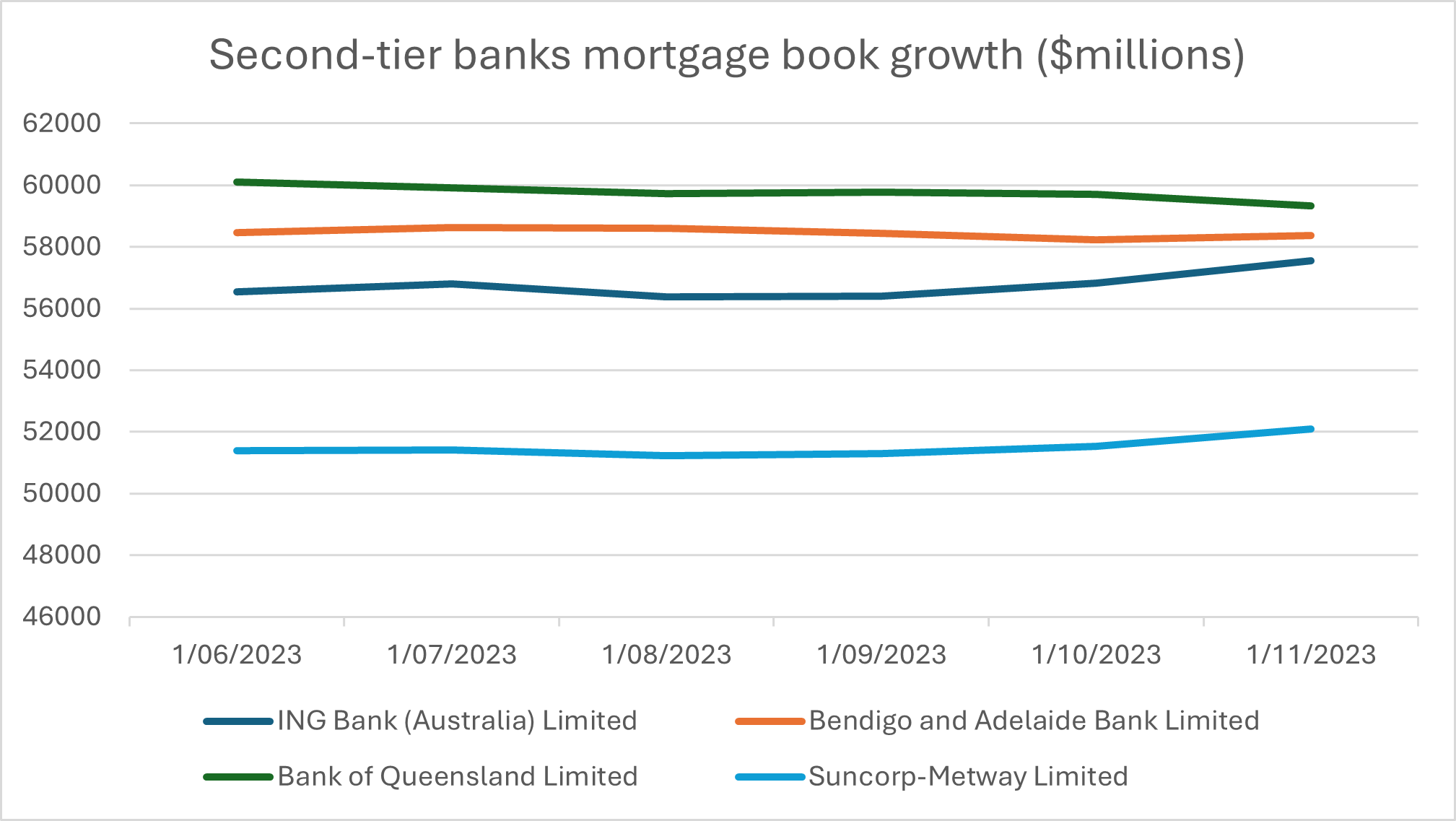

After slipping for three months in the second half of 2023, Commonwealth Bank’s mortgage business has rebounded, while the other big four banks keep growing, according to new data from the prudential regulator.
APRA’s monthly authorised deposit-taking institution statistics (MADIs) November report also showed Australia’s fifth largest home loan lender, Macquarie, has continued to gain market share while some other larger lenders have started to lose momentum.
The data, which shows both owner-occupier and investment home loans, illustrated that the mortgage market has generally recovered from the heavy refinancing activity and credit challenges experienced midway through 2023.
For the first time in its history, CBA experienced a three-month slide in mortgages.
CommBank’s owner-occupied loans were worst hit, losing over $4 billion in three months dropping from $366.2 billion in June to $362.1 billion by the end of September.
In November, the bank said its decline in home loans was “a consequence of our focus on increasing our share of Australian home loan revenue”, reflecting ongoing competition and a “disciplined approach to managing margins”.
CBA also said it has focused on its direct channel, with loans originated through CBA channels “broadly flat” in the September quarter, while lower margin new broker loans declined by $5 million over the same period.
However, the bank has also repeatedly reiterated that mortgage brokers remain an important part of its network.
“We have the largest proprietary, or bank employee, lenders who have direct relationships with our customers, but still mortgage brokers are a really important part of being able to support our customer base,” CBA CEO Matt Comyn (pictured top) said in July.
Whatever the case, the strategy seems to be working. In just one month, CBA’s owner-occupied loans jumped by $1.5 billion, while investor loans climbed $770 million.
Whether this marks a true trend remains to be seen, but it’s clear CBA is taking a new approach to the competitive home loan market.
Elsewhere, the rest of the big four continued to grow with Westpac ($2.2 billion), NAB ($1 billion), and ANZ ($1.3 billion) all reporting healthy monthly gains particularly among owner-occupied loans.
This was after significant annual growth reported in September, with Westpac ($18 billion), NAB ($10 billion), and ANZ ($20 billion) increasing their market share year-on-year.
Macquarie was again the biggest winner, increasing its books by $1.2 billion in November, which is a higher percentage of its mortgage books ($113 billion) compared to its larger competitors.
This came after Macquarie increased its home loan lending $11.6 billion year-on-year to September, which equates to around 10% of its total mortgage book.

The next five biggest mortgage lenders – Bank of Queensland, Bendigo and Adelaide Bank, ING Bank, Suncorp-Metway, and HSBC Bank – had mixed fortunes.
Bank of Queensland’s mortgage books lost $390 million in one month to $59.3 billion and is in danger of being dethroned as Australia’s sixth largest home loan lender by Bendigo and Adelaide Bank ($58.3 billion) and ING ($57.5 billion).
Suncorp-Metway, which mostly deals with owner-occupied loans, avoided the investor malaise and continued to grow by $480 million, while HSBC continued its steady growth.
When analysed together, Australia’s 10 largest banks make up 92.1% of the mortgage lending market.
What do you think of the latest data about the major banks? Comment below.

